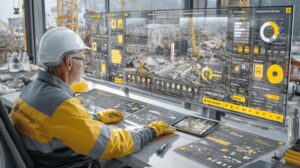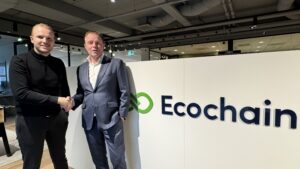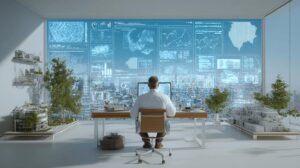Did you know that traditional roofing systems are responsible for significant portions of a building's lifetime carbon emissions? Environmental Product Declaration (EPD) roofing transforms this narrative, offering architects, contractors, and sustainability managers unprecedented transparency into the true environmental costs of different roofing materials. By clearly quantifying lifecycle impacts – from sourcing raw materials to final disposal – EPD roofing empowers better sustainability decisions, helps companies exceed industry standards, and advances net-zero targets. Here’s how EPD roofing enhances your building's sustainability – and why it's reshaping the future of environmentally sustainable roofing options.
Understanding EPD Roofing: What is an Environmental Product Declaration?
An Environmental Product Declaration (EPD) is an independently verified document that transparently presents the lifecycle environmental impacts of roofing materials. Covering every stage – from raw material extraction and manufacturing to end-of-life disposal – an EPD provides a clear, data-driven picture of a product's sustainability performance.
Traditionally, the roofing industry has depended on aggregate EPDs, which offer generalized data based on averages across multiple products. Aggregate EPDs provide broad insights but lack the specificity required for precise sustainability evaluations. In contrast, product-specific EPDs detail accurate environmental performance data for individual roofing products, empowering architects, engineers, and contractors to make informed choices aligned with stringent sustainability goals.
For sustainability officers and supply chain managers committed to environmentally sustainable roofing options, product-specific EPD roofing data is essential. By clearly understanding a roofing product's carbon footprint, resource use, and waste generation, decision-makers can compare options, optimize designs, and comply with rigorous industry standards for membrane roofing.
A shift toward product-specific EPDs reflects a broader industry trend toward transparency and accountability. Companies like GAF and Sika have led this shift, providing detailed lifecycle assessments and verifiable environmental metrics. This precision not only ensures compliance with sustainability certifications like LEED and BREEAM but also allows businesses to genuinely advance toward net-zero targets.
By adopting EPD roofing solutions, stakeholders gain the visibility necessary to select roofing materials that reduce environmental impact, meet regulatory requirements, and effectively contribute to long-term sustainability objectives.
The Lifecycle Assessment Behind EPD Roofing Solutions
Life Cycle Assessment (LCA) forms the scientific backbone of Environmental Product Declarations (EPDs), providing detailed, data-driven insights into the environmental impact of roofing materials. An LCA systematically evaluates every stage of a roofing product’s lifecycle – from raw material extraction and production to transportation, installation, usage, and final disposal (cradle-to-grave). This comprehensive evaluation helps manufacturers and sustainability managers understand precisely where environmental impacts occur and how they can be significantly reduced.
The LCA process begins by gathering data on raw material sourcing, energy consumption, and associated emissions during manufacturing. Next, it evaluates transportation logistics, including emissions generated from shipping roofing materials to the installation site. The installation phase assessment captures additional impacts from adhesives, fasteners, and equipment required to securely apply the roofing systems. During the usage phase, LCAs quantify energy efficiency benefits, durability, longevity, and maintenance requirements. Finally, the disposal phase audits recycling potential, landfill waste, and emissions from incineration or other end-of-life processes.
Manufacturers like GAF leverage comprehensive LCAs to identify sustainability improvements. By pinpointing carbon-intensive materials or inefficient manufacturing procedures, these assessments enable targeted interventions that substantially reduce embodied carbon and overall environmental impacts. For example, if an LCA identifies significant emissions from the production of a specific membrane roof system, manufacturers can explore more sustainable alternatives or optimize the existing process.
LCAs also play a crucial role in roofing material performance comparisons. They provide architects, engineers, and supply chain managers with detailed, comparable data on the durability and longevity of different roofing types – such as TPO, PVC, and rubber roofs. Through transparent comparison, stakeholders can confidently select roofing solutions with optimal sustainability performance, helping them meet regulatory requirements, industry standards, and enterprise-wide sustainability targets.
Advantages of Adopting EPD Roofing in Sustainable Construction
Selecting roofing materials backed by Environmental Product Declarations (EPDs) significantly benefits architects, engineers, and contractors pursuing sustainability goals. EPD roofing systems offer comprehensive technical insights into the lifecycle environmental impacts of roofing materials – from raw material extraction through disposal – enabling precise evaluations of a product’s sustainability performance.
Transparent EPD data allow stakeholders to confidently assess environmental attributes and directly compare eco-friendly roof system advantages. By clearly presenting the carbon footprint, energy efficiency, and recyclability of roofing solutions, EPDs simplify compliance with sustainability standards like LEED certification. Projects incorporating EPD-certified roofing materials can readily achieve regulatory compliance and secure valuable LEED credits, supporting organizations' broader sustainability and net-zero ambitions.
Energy-efficient roofing material benefits extend beyond environmental impact reduction. Reflective membranes, detailed within EPDs, substantially lower energy consumption by minimizing heat absorption and reducing air conditioning demands, creating immediate operational savings. These economic benefits of green roof membranes enhance long-term financial returns by lowering energy costs and extending product lifespan.
In addition to energy savings, EPD roofing materials contribute positively to corporate sustainability reporting. Companies can transparently demonstrate measurable progress toward commitments such as Scope 3 emissions reductions and net-zero targets, strengthening stakeholder trust and brand reputation. Adopting EPD roofing positions businesses as sustainability leaders, aligning environmental objectives with tangible economic advantages and regulatory fulfillment.
Technical Insights: Roofing Material Performance in EPD Roofing Systems
Roofing products backed by Environmental Product Declarations (EPDs) provide transparent, measurable insights into each material's environmental and performance characteristics. Manufacturers such as Sika utilize detailed cradle-to-grave EPDs for products like their Sarnafil® roofing membranes, clearly documenting sustainability performance across the entire lifecycle – from raw materials sourcing to end-of-life disposal.
EPD roofing systems typically feature membranes made from thermoplastic polyolefin (TPO), polyvinyl chloride (PVC), or synthetic rubbers. Each material type offers distinct technical specifications for synthetic roofs:
-
TPO membranes: Known for superior reflectivity and weather-resistant membrane technology, TPO roofs effectively reduce heat absorption and energy consumption. Their UV-resistant composition improves durability, extending roof lifespan and reducing replacement frequency.
-
PVC membranes: Renowned for strength and chemical resistance, PVC roofing systems provide strong protection against harsh weather conditions, including heavy rainfall, wind, and hail. PVC membranes often include reinforced layers that enhance dimensional stability, durability, and puncture resistance – key components of innovative membrane roofing solutions.
-
Synthetic rubber (EPDM) membranes: Highly flexible and resilient, EPDM roofing systems offer exceptional weather resistance and thermal insulation properties. Their elasticity allows them to withstand temperature fluctuations without cracking, extending service life and minimizing maintenance requirements.
Technical documentation within EPDs clearly outlines these performance metrics, including precise data on weather resistance, durability, thermal insulation, and fire resistance. This clarity empowers sustainability officers and supply chain managers to select materials aligned with rigorous sustainability goals and regulatory compliance:
| Roofing Material | Durability | Weather Resistance | Thermal Insulation | Fire Resistance |
|---|---|---|---|---|
| TPO | High (20-30 years) | Excellent UV and heat resistance | High reflectivity reduces heat absorption | Class A rated |
| PVC | High (25-30 years) | Excellent chemical and weather resistance | Strong insulation performance | Class A rated |
| EPDM (Synthetic Rubber) | Very High (30+ years) | Superior flexibility and weather resistance | Good insulation and thermal stability | Class A rated |
By detailing these performance characteristics transparently, EPD roofing solutions allow stakeholders to confidently choose materials that deliver lasting sustainability and environmental benefits.
Comparative Analysis: EPD Roofing vs. Conventional Roofing Systems
When evaluating roofing options, sustainability officers and supply chain managers must consider both environmental performance and economic factors. Environmental Product Declarations (EPDs) offer transparent, independently verified data, enabling clear comparisons between EPD-certified roofing solutions and traditional roofing systems.
EPD roofing products – such as membrane systems including TPO, PVC, and synthetic rubber – undergo rigorous lifecycle assessments (LCAs). These assessments detail environmental impacts across every stage, from raw material extraction through manufacturing, installation, usage, and disposal. Compared to conventional roofing, membranes backed by EPDs consistently demonstrate superior durability, energy efficiency, and lower overall environmental impact.
Key comparative insights include:
- Environmental Impact: EPD roofing membranes are designed to minimize carbon footprints. Comparative data highlight measurable reductions in embodied carbon, waste generation, and resource depletion compared to traditional thermoplastic roofing systems.
- Durability and Lifecycle: Roofing membranes with verified EPDs typically outperform conventional materials. For example, TPO and PVC membranes commonly have lifespans of 20-30 years, whereas synthetic rubber (EPDM) roofing can exceed 30 years. This longevity significantly reduces lifecycle impacts through fewer replacements and reduced maintenance requirements.
- Energy Efficiency: Due to higher reflectivity and advanced weather-resistant properties, EPD-certified TPO or PVC membranes generate significant energy savings. Conventional roofs, such as asphalt shingles and standard thermoplastic systems, absorb heat, increasing cooling demands and energy-related emissions.
Comparative performance data for roofing materials:
| Roofing Type | Average Lifespan | Energy Efficiency | Maintenance Needs | Environmental Impact |
|---|---|---|---|---|
| TPO Membrane (EPD-certified) | 20-30 years | High (reflective) | Low | Low embodied carbon |
| PVC Membrane (EPD-certified) | 25-30 years | High (reflective) | Low | Low embodied carbon |
| EPDM Rubber Membrane (EPD-certified) | 30+ years | Moderate | Very Low | Lowest embodied carbon |
| Conventional Thermoplastic Roofing | 15-20 years | Moderate-Low | Moderate-High | Higher embodied carbon |
By clearly benchmarking these sustainability metrics, EPD roofing solutions allow stakeholders to make informed decisions aligned with ambitious sustainability targets.
Regulatory Compliance and Industry Standards for EPD Roofing
Environmental Product Declarations (EPDs) for roofing systems adhere to stringent international standards, notably ISO 14025 and EN 15804. These globally recognized guidelines ensure transparency and credibility in reporting environmental impacts, providing architects, builders, and sustainability managers with reliable data essential for sustainable decision-making.
Compliance with these standards positions manufacturers strategically for meeting regulatory demands. For instance, roofing systems with optimized EPDs directly align with green building frameworks such as LEED 4.1, enabling projects to earn valuable credits toward sustainability certifications. Under LEED 4.1 guidelines, demonstrating significant environmental performance improvements – such as measurable reductions in embodied carbon – can substantially increase credit contributions for buildings aiming at sustainability certification.
EPD roofing solutions also strengthen alignment with net-zero sustainability initiatives. As regulatory requirements increasingly emphasize carbon neutrality and emissions transparency, membrane roofing products supported by verified EPDs enable companies to meet and exceed these ambitious targets. Transparent lifecycle data allows stakeholders to quantify carbon footprints accurately, optimize supply chain emissions, and demonstrate concrete progress toward net-zero commitments.
To effectively leverage regulatory compliance for roof systems, stakeholders should ensure their selected EPD roofing products meet both technical performance benchmarks and stringent environmental standards. Adopting roofing materials backed by comprehensive, third-party verified EPDs positions organizations ahead of regulatory curves, helps fulfill sustainability mandates, and facilitates clear communication of environmental credentials to investors, customers, and regulatory agencies.
Implementation and Maintenance Best Practices for EPD Roofing Systems
Proper installation and maintenance are critical to maximizing the lifecycle sustainability benefits of EPD roofing systems. Adhering strictly to manufacturers' technical guidelines during installation ensures membrane roofs perform optimally and reach their expected longevity. Innovative installation methods, such as fully adhered roofing techniques using advanced adhesives or mechanically fastened systems, help secure membrane performance, resist wind uplift, and protect against weather events.
Key roof installation technical details include selecting the correct attachment method based on roof slope, building height, and regional climate conditions. For instance, fully adhered rubber roofs leveraging innovative adhesives offer enhanced weather resistance and durability, ideal for buildings experiencing severe weather or temperature fluctuations. Meanwhile, mechanically fastened membranes provide reliable performance on larger, flatter surfaces, delivering strong wind resistance and ease of installation.
Following installation, adherence to membrane roof maintenance best practices prolongs roof lifespan and sustainability performance. Recommended maintenance schedules typically involve:
- Regular inspections at least twice annually, ideally before and after extreme weather seasons, to identify and address potential issues.
- Prompt response to leak detections with immediate repairs to prevent further damage and environmental impacts.
- Scheduled cleaning of debris and drainage systems, minimizing standing water and potential material degradation.
Maintenance teams should document all inspections and repairs to maintain a comprehensive record that supports warranty claims and regulatory compliance. An example maintenance schedule might look like this:
| Maintenance Task | Frequency | Action Required |
|---|---|---|
| Visual Inspection | Twice per year (spring/fall) | Check for membrane damage, punctures, loose seams |
| Leak Response | Immediately upon detection | Identify leak source, repair membrane promptly |
| Drainage System Cleaning | Quarterly | Clear debris, verify unobstructed water flow |
Implementing these best practices ensures your roofing system consistently delivers the environmental performance outlined in its EPD, significantly supporting your organization's broader sustainability commitments.
Real-World Applications: Case Studies of Successful EPD Roofing Projects
Leading producers of sustainable roofing systems, including GAF and Sika, have published membrane roofing case studies that clearly demonstrate the measurable benefits of adopting EPD roofing. These real-world examples illustrate how commercial membrane systems for flat roofs contribute significantly to sustainability goals and improved environmental performance.
One notable case study involves GAF's EverGuard® TPO membrane, implemented at a large-scale distribution center. The project achieved a documented 30% reduction in embodied carbon compared to conventional roofing alternatives. Additionally, the reflective properties of the TPO membrane improved building energy efficiency, reducing cooling-related energy consumption by 20%.
Similarly, Sika's Sarnafil® PVC membranes were successfully installed across multiple commercial facilities, delivering verifiable sustainability outcomes. In one prominent installation at a corporate headquarters, the Sarnafil® system demonstrated a 25% improvement in lifecycle carbon emissions, directly supporting the company's net-zero objectives.
These membrane roofing case studies provide concrete proof of how EPD-certified roofing solutions deliver tangible sustainability improvements in commercial and industrial contexts. By offering verified performance metrics and clear environmental outcomes, EPD roofing solutions build credibility and align closely with enterprise sustainability commitments.
Final Words
Implementing EPD roofing empowers architects and contractors to significantly enhance the sustainability of their projects.
With detailed lifecycle data provided by product-specific Environmental Product Declarations, stakeholders can pinpoint opportunities to minimize carbon footprints and achieve regulatory compliance efficiently.
As sustainable construction increasingly demands transparency, performance, and environmental accountability, adopting epd roofing represents a forward-thinking choice.
By choosing materials backed by precise environmental credentials, industry professionals ensure long-term cost benefits, increased energy efficiency, and meaningful contributions to broader net-zero ambitions.
Choosing EPD roofing today creates lasting value tomorrow.
FAQ
Q: What does EPD stand for in roofing?
A: EPD stands for Environmental Product Declaration – a standardized, verified document detailing the lifecycle environmental impacts of roofing products, helping architects and builders select sustainable materials and achieve regulatory compliance.
Q: How is an EPD for roofing products created?
A: An EPD for roofing products is created through detailed Life Cycle Assessments (LCAs), evaluating environmental impacts from material sourcing through disposal, enabling manufacturers to identify improvement opportunities and reduce embodied carbon.
Q: Why should builders and architects choose roofing products with EPDs?
A: Builders and architects should choose roofing products with EPDs because they provide transparent insights into sustainability metrics, guarantee regulatory compliance (e.g., LEED), enhance energy efficiency, and offer measurable environmental and economic benefits.
Q: How does EPD-certified roofing compare to conventional roofing systems?
A: EPD-certified roofing systems generally outperform conventional options by offering higher durability, improved energy efficiency, and reduced lifecycle environmental impacts, as verified by transparent and comparative lifecycle data included in their EPD documentation.
Q: What are the main roofing membrane types represented in EPD documentation?
A: Roofing membrane types commonly represented in EPD documentation include TPO (Thermoplastic Polyolefin), PVC, EPDM (synthetic rubber), and other synthetic membranes, highlighting detailed sustainability metrics such as weather resistance, thermal insulation, durability, and fire safety.
Q: Can a roofing EPD help achieve LEED certification and net-zero targets?
A: Yes, roofing EPDs align with industry standards (ISO 14025, EN 15804) and directly contribute to achieving LEED credits and net-zero sustainability objectives through verified environmental improvements and energy-efficient performance metrics.
Q: What are best practices for maintaining EPD-certified roofing systems?
A: Best practices for maintaining EPD-certified roofing systems include regular inspections, prompt leak repairs, strict adherence to the manufacturer's installation and maintenance guidelines, and utilizing innovative adhesives and methods to maximize durability and performance.




